Plunking For Steelhead: Includes 2 Most Effective Plunking Rigs
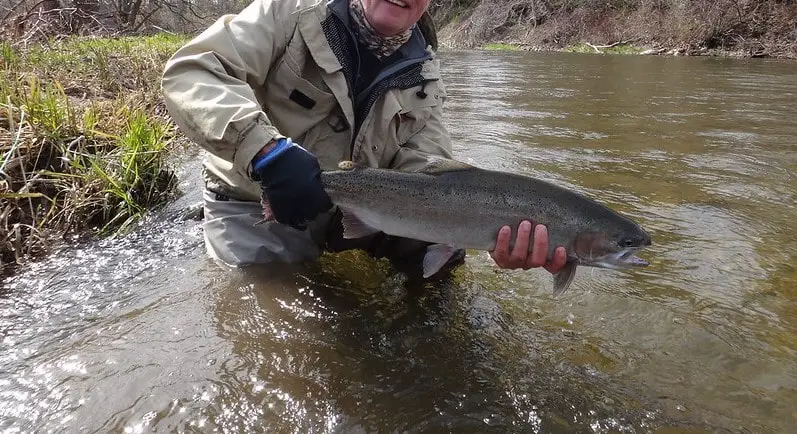
Plunking for steelhead simply refers to casting a large heavy weight that sits on the bottom with a bait attached to it. There are some tips and tricks that guides and experienced anglers use that will make plunking even more effective.
When plunking, the heavy weight anchors the bait close to the bottom while you sit and then wait for the steelhead to swim by and eat your bait. Often the bait is rigged so that it is suspended one to 4 feet off the bottom. Well, at least that’s what most anglers do.
Anglers will cast the bait out, put the rod into a rod holder, and just wait. It may take minutes or hours for a hungry steelhead to swim by and grab your bait, or nothing will bite at all.
Periodically moving spots and choosing high-percentage areas can significantly increase your chances when plunking. I will leave my rig in the same spot for 5 to 10 minutes before reeling in, checking the bait and rig, and then casting it out to a new spot.
Only certain baits will work with this method, but some lures are very effective with this method, which I will discuss in this article. Plunking works in rivers or in the ocean.
There are also certain hooks that work better than others, which will also be discussed in this article.
Plunking For Steelhead
This is an effective technique for steelhead fishing since the steelhead often stays close to the bottom, which is precisely where your plunking rig is. Although effective on many rivers, it is not a very common method, and is overshadowed by float fishing, lure casters, and fly anglers, so you won’t see plunking done very often.
With plunking, you can get very deep and into spots the steelhead will hold.
Plunking is a good method when you need to make far casts.
Plunking also allows you to position your bait along the bank where the steelhead travel during high and dirty water. Your bait can stay in this spot for long periods of time and then be located by passing steelhead.
Plunking is not difficult to do and it does not require any special casting skills, it does not put many physical demands on an angler and does not require expensive gear.
At times, other methods will work better. It’s always good to have other options since plunking may not always be the best method in some river situations or spots.
Best Rods For Plunking
The recommended rods include rod sizes that range from 8.5′ to 12′, with medium-heavy and heavy action rods capable of casting 6-8oz weights.
My preference is a rod rated for a 15-30 pound line.
Rod choices include Berkley, Lamiglas, Ugly Stik, Daiwa, Shimano, Okuma SST, and Loomis SAMR 1265 C. and specific rods like the Lamiglas Insane Surf and the extra Heavy 10’6″ Okuma SST rated for up to 16oz.
The choice of rod often depends on fishing conditions and the angler’s preference for weight and casting ability.
Best Reels
Most spinning reels recommended for steelhead in the 3500 to 4500 sizes will hold enough line to work very well for steelhead plunking. You can also use baitcasting reels that are recommended for steelhead and salmon.
Best Line
Anglers prefer to use Monofilament and braided lines. Some anglers prefer one over the other. A 30 to 50-pound braided line will cast far and be able to handle any steelhead and the heavy weights used. If you choose mono, a 12 to 16-pound line is required to cast the heavy rig.
Best Leaders For Steelhead Plunking
Depending on the size of the river and the size of the fish, a good fluorocarbon leader between 8 and 14 pounds will work. Upsize for larger rivers, fast currents, and big fish, and downside for smaller streams.
Where To Plunk For Steelhead
Anglers use this method when fishing shorelines, beaches, river mouths, and anywhere in the river. Just about any steelhead river is suitable for plunking.
This method is largely dependent on this upriver migration and movement of steelhead and requires that you know the route they pass through on their return to their release points.
Or, it requires steelhead to be cruising the shoreline and river mouths prior to or after the spawning runs.
If you can position your plunking right along migration routes, you have a better chance of catching steelhead.

As a rule of thumb, concentrate your efforts on the bends and near-shore areas with less current and look for concentration areas and seams.
Concentration areas are often found where on the softer water edges just below a rapid or shallow section.
Seams are the transition area between the fast water and the slow water. Often, seams collect the most bubbles and anglers often call these bubble lines. Food for the fish, like insects and eggs will also concentrate in the seams.
The seams allow the fish to be out of the fastest water but still remain in the current.
Every experienced angler and river guide knows that the holding of steelhead in any location in a steelhead river depends on the time of year and the temperature of the water. This is important information if you want to be able to consistently catch steelhead.
When To Plunk For Steelhead
The simple answer to the above question would be when steelhead are in the river or staging near shore or river mouths. Anytime steelhead are morning and are withing casting distance you can plunk for steelhead.
Best Baits For Plunking
There are many great baits for steelhead. Live and real baits are often the best baits.
Artificial baits like beads can be fantastic when fishing with other methods, but those hard beads have no taste, and as soon as a steelhead picks up and bites that hard bead it will spit it out.
Baits like a spawn sacs (also known as roe or roe sacs), skein, worms, minnows, and shrimp are all good baits because they scent well in the water and they taste and feel natural so the steelhead will hold on long enough for the angler to detect the bite. This is critical with this method!
NOTE: check the regulations in your area to be sure baits are allowed.
Keeping The Bait Off The Bottom
One thing that is really important is to use the correct setup that allows you to keep your bait 12 inches to 3 feet off the bottom.
Since steelhead will look forwards and upwards and they are usually 6 inches to 12 inches off the bottom, it is rare for them to feed down. Therefore, if your bait is lying on the bottom or is in between the rocks, the steelhead is not likely going to see it and bite it.
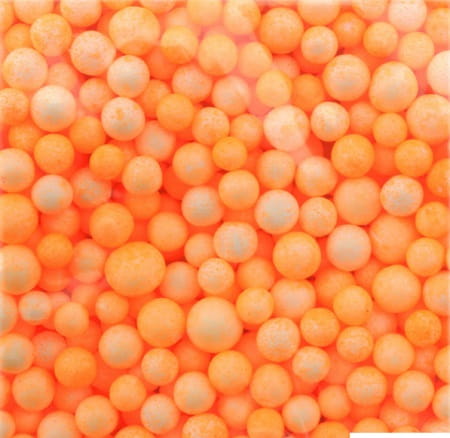
To keep the bait off the bottom, anglers will use eggs floaters in their spawn sacks (as seen in the picture), or floating beads or lil’ corky’s on the line to float the bait up and off the bottom.
Using a Drop Shot style plunking rig is a great way to elevate your bait and keep it at the desired level.
Plunking With Lures
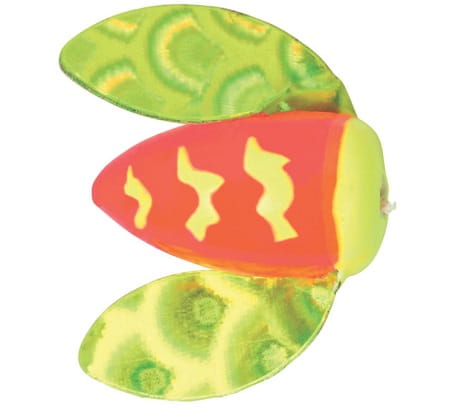
It is also possible to use lures like Spin N Glo, or crankbaits, or one of my favorites is the Kwickfish Xtreme or Flatfish.
These lures sit in place and spin or wobble back and forth, and as the salmon swim close, they see it and grab it.
In some cases, like with the Spin N Glo, anglers will tip the hook with skein, a shrimp, or a minnow.
Plunking Setup
The first setup is for plunking for salmon using lures. This is the most common plunking rig, and it’s adjustable. You can set your depth based on the length of your dropper.
You can also set your weight based on the velocity of the current. In a slower current, use fewer weights, and in a faster current, use more weights.
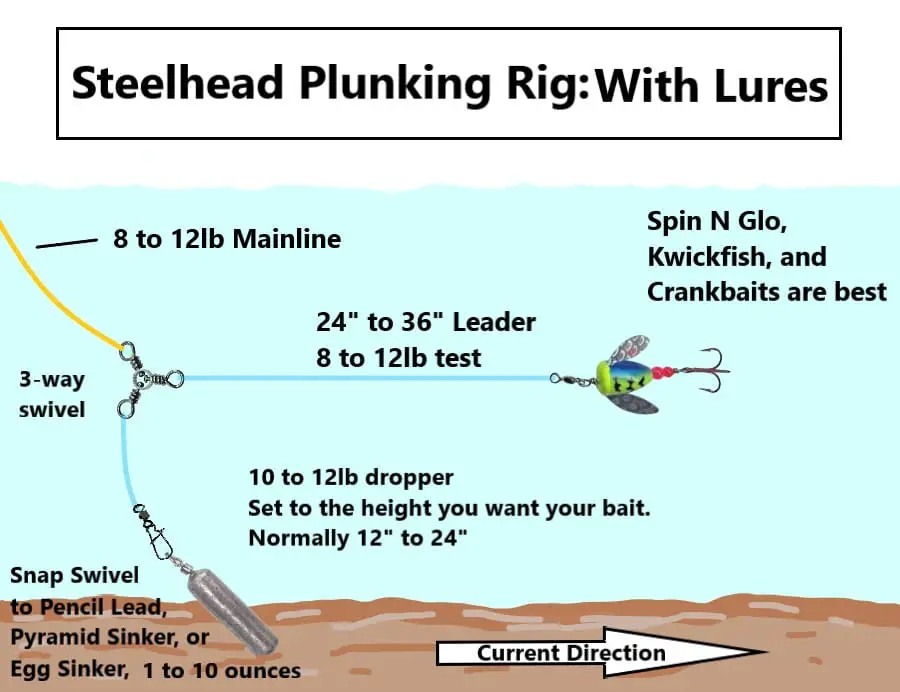
There are a number of ways to set up your rig, but for the sake of this post, these are two ways to set up a steelhead plunking rig.
- To start with, you need a sturdy rod holder that you can knock/forge into the ground and will firmly withstand a steelhead strike when they bite.
- Tie a three-way swivel to the end of your mainline (I personally recommend a 50-pound braided mainline).
- Tie your leader to one of the eyes on the swivel. I personally recommend leader material made of monofilament and in the range of 12- and 15-pound test.
- Tie a long dropper line to the remaining eye on the swivel (about 8 to 20 inches).
- Tie a hook (octopus-style) to the end of your leader, ranging from 1/0 to 3/0 using an egg loop knot.
- After tying on the hook, slide your down Spin-N-GLO and a bead matching the color of the lure.
- Attach a Duolock swivel to the end of the dropper and snap in a sinker weight via this duo lock (1 to 10 oz). For best-holding sinkers in strong currents, you should go for Pyramid or teardrop sinkers.
- Some anglers always like to attach a bell on the rod, so that when a steelhead bites, it alerts them.
The Steelhead Plunking Rig For Baits
The plunking rig below shows you how to rig your line for baits like eggs. You can also use prawns, shrimp, worms, minnows, or even cut-bait.
For salmon fishing around the Great Lakes, one of the hottest baits for this method, and one used by a lot of river guides, is Skein. Skein is the mature eggs that are still attached together by the egg membrane, or skein.
Always ensure to check your rig frequently. Knowing that you’re fishing in high water means there will still be lots of junk that can begrime your gear.
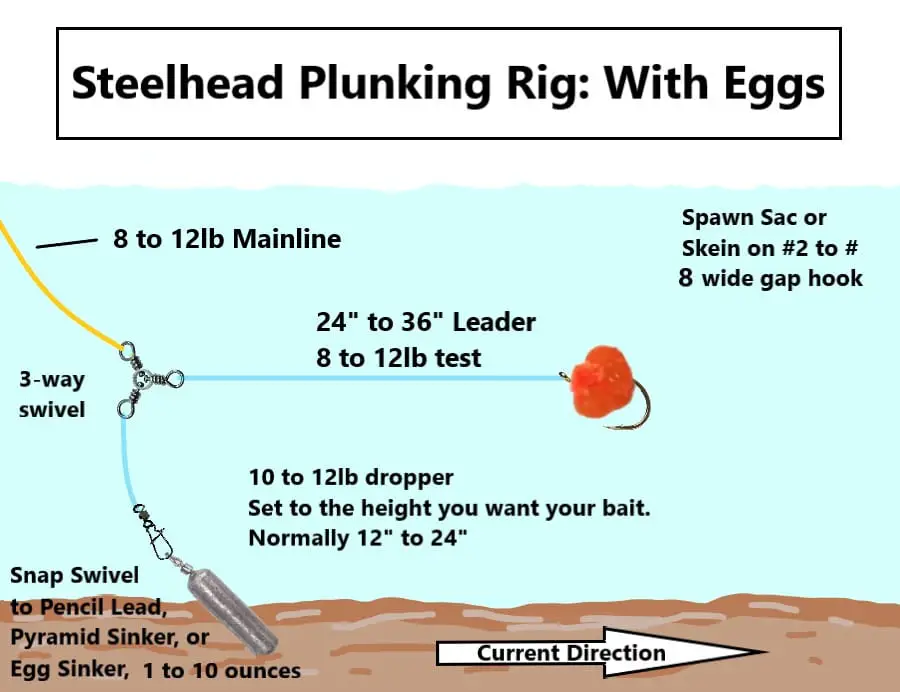
How To Detect The Bite
Some anglers always like to attach a bell on the rod, so that when a steelhead bites, it alerts them. There’s really no rhyme to steelhead bites when plunking, as it varies from one steelhead to another.
Sometimes, what you get is a series of taps on the tip of your rig that looks like a steelhead bite. That could be a result of a steelhead coming along and just grabbing your gear, and figuring what is going on. Or it could just be a hit-and-run bite. In that case, your rod can get yanked if not properly kept.
Always look out for the tip of your rod, when it loads up or shakes, and check for a bite.
There are many methods that can be effective when steelhead fishing, and I recommend knowing multiple methods to be able to adapt to different types of river conditions. You can see these methods and more on my page Steelhead Fishing: How The Guide Catch More Steelhead
Tight Lines,
Graham
